
Andrew Kaplowitz and Paris La Don
November 29, 2021
Manifesting
Given that the language of decolonization is increasingly co-opted I want to begin by acknowledging Eve Tuck and K. Wayne Yang’s excellent article Decolonization is not a Metaphor which lays out the fundamental importance of settlers returning land, power, and privilege in real tangible ways. As a settler on Turtle Island (so-called North America) I am interested in rematriating my power to Native Americans through real actions and have taken it upon myself to support Indigenous power movements. Furthermore, as a resident of Waawiyatanong (so-called Detroit) on Anishinabek land and one of the largest centers of the Black diaspora, my thoughts are also caught up in what can be done to repair the damage of slavery, another colonial legacy with foundational impacts on our current reality.
The concept of Doikayt serendipitously crossed my path while working on this essay and helped crystalize certain ideas that evaded definition in earlier drafts. Espoused by the Bund – a Jewish, anti-Zionist, secular, transnational, socialist organization – Doikayt translates to “hereness” and calls for Jews to focus on solving issues in the places we inhabit now rather than focus on “thereness” and a return to ancestral homelands. As a Jew in diaspora, the perennial question of belonging (Where do I belong? How do I belong?) is inextricable from questions of colonization and decolonization.
This essay recenters John Trudell’s articulation of “being human” as a Native American political framework that unsettles interpersonal colonial power dynamics. Trudell’s conception of “being human” posits that the civilizing process manifested in our current colonial paradigm disconnects people, blocking our ability to connect authentically, thoughtfully, and constructively. I interpret Trudell’s concept of “being human” as defined by a union of “being” - a physical and psychological body event - with conscientious acts of humanity that disrupt authoritarian power structures. This alignment of the embodied self and the thinking mind allows us to unsettle normative conditioning and connect to a decolonized version of ourselves. I outline how “being human” simultaneously eschews colonial identities and helps one internalize a decolonized paradigm.
Unsettling
Paris and I matched on Tinder in the summer of 2020. Their profile surprised me because my preferences were set to women and I read their body as male, with broad shoulders, a strong jawline, and sculpted muscles. I pause on their profile and tap through the pictures again, intrigued, and hesitant, unsure if it’s my sexuality or conditioning holding me back. I swipe right, we match, and quickly schedule a photoshoot, sidestepping the subtext of a Tinder meetup with a professional pretext.
This is my starting place, the thawing of the soil inviting the seed to tremble in anticipation as it imagines spring. My body is activated, aggravated by something bubbling in the subconscious asking to be identified. This tension guides me to places where I am disconnected from myself or my values. When my body and thoughts are incongruous, I try to allow this dynamic to present itself, to sit with the discomfort until I can determine the source of the feeling. I give myself permission to be uncomfortable and be open to future possibilities, to check in with my body and monitor my emotions before reacting.
It’s late afternoon when I pick up Paris. They tell me about their recent return from China, leaving a career in ballet, modeling, and choreography to pursue fashion design and live closer to family. We cross the city scoping locations, but cops scare us away from each potential site until we find space to work in an abandoned warehouse. Paris double checks to make sure I feel comfortable with a nude shoot before stripping. They ask for a hand and I help wrap them in bandages, adjusting the spacing on the spirals of gauze embracing their limbs.
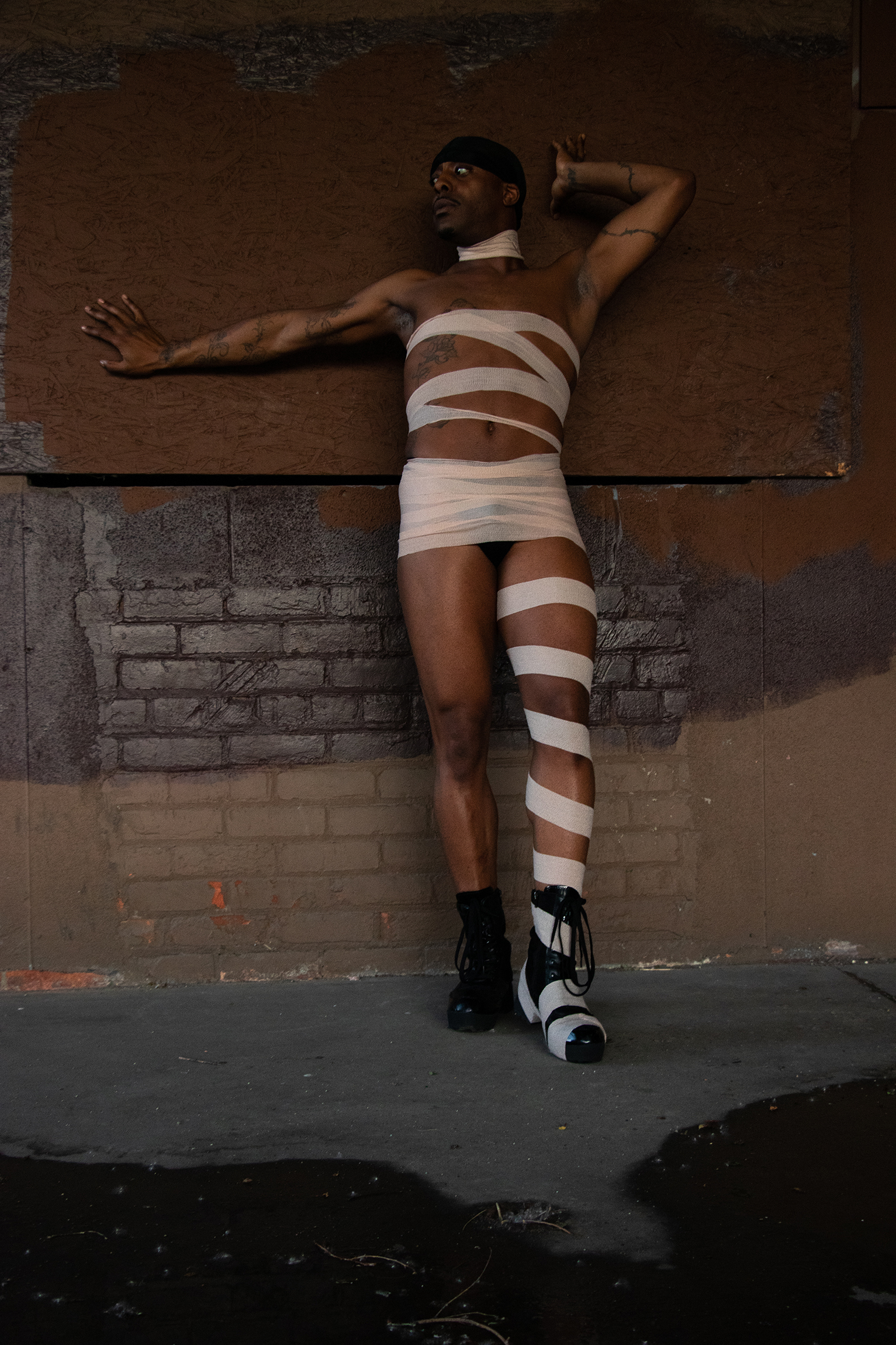
At first, I feel out of my league as Paris moves through poses faster than I can take photos, but as we work and warm up to each other, I gain confidence. Soon we’re building on each other’s energy, filling the space with our bodies and voices, playing on the structures, using the environment to fuel our creativity, exploring ideas, and calling out direction as we circle each other. The abandoned place feels wild and nurturing, a harmonized rhythm propels us onward as Paris dances in the sunset.
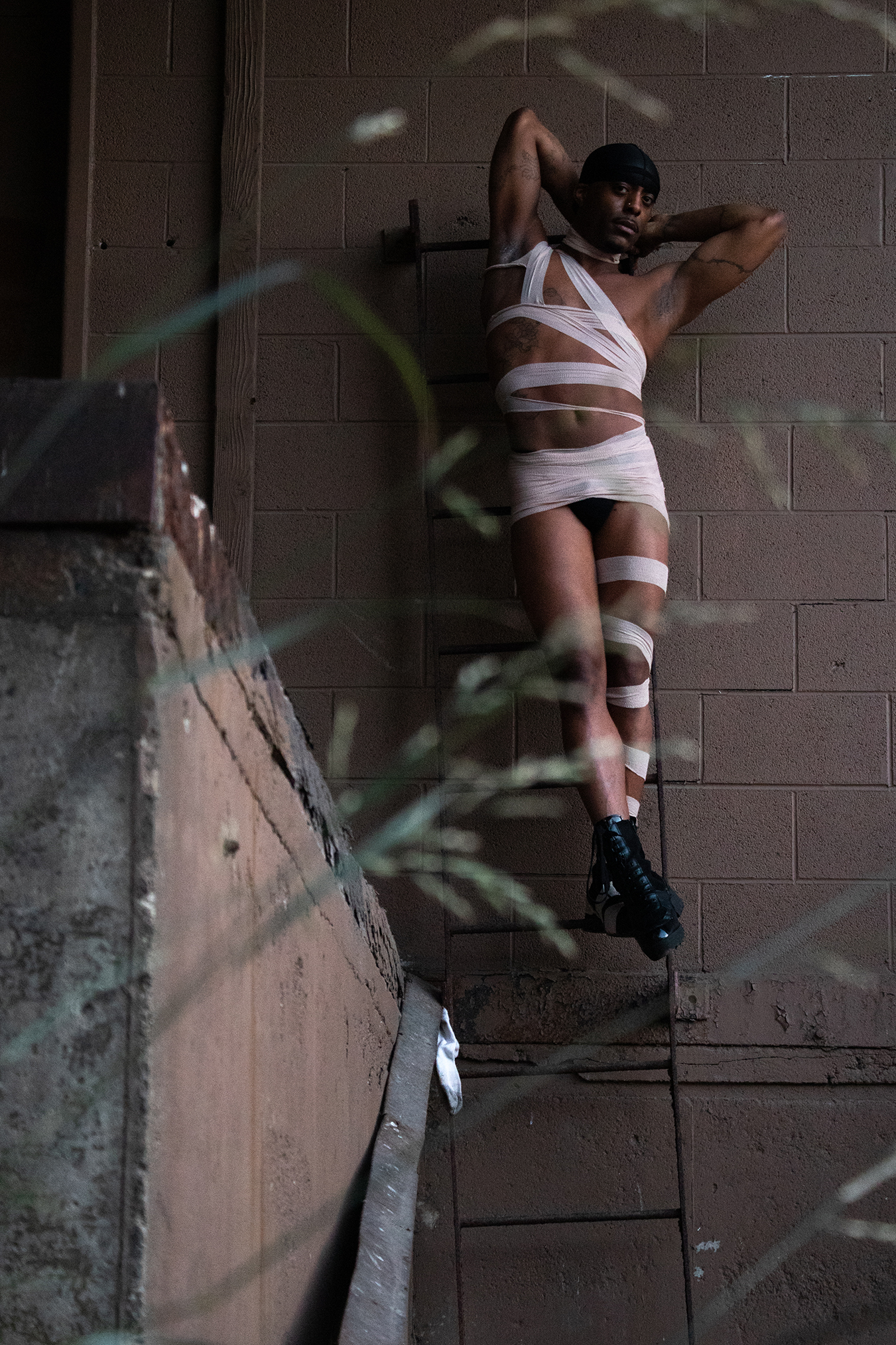
After sundown we’re both eager to continue and I have another location in mind. We drive to the train tracks and an entirely different series of photos is produced. We are at home among the ruins, insulated from judgment or judging by quilts of graffiti hanging on crumbling walls. In the dusk we experiment more and the urban decay that fostered our creativity now harbors a mummy made of gauze inhabiting the borderlands between life, death, and rebirth. I feel the blood rush in my veins as the person who I thought I was dies and my spirit expands beyond my body melding with the haunting twilight.

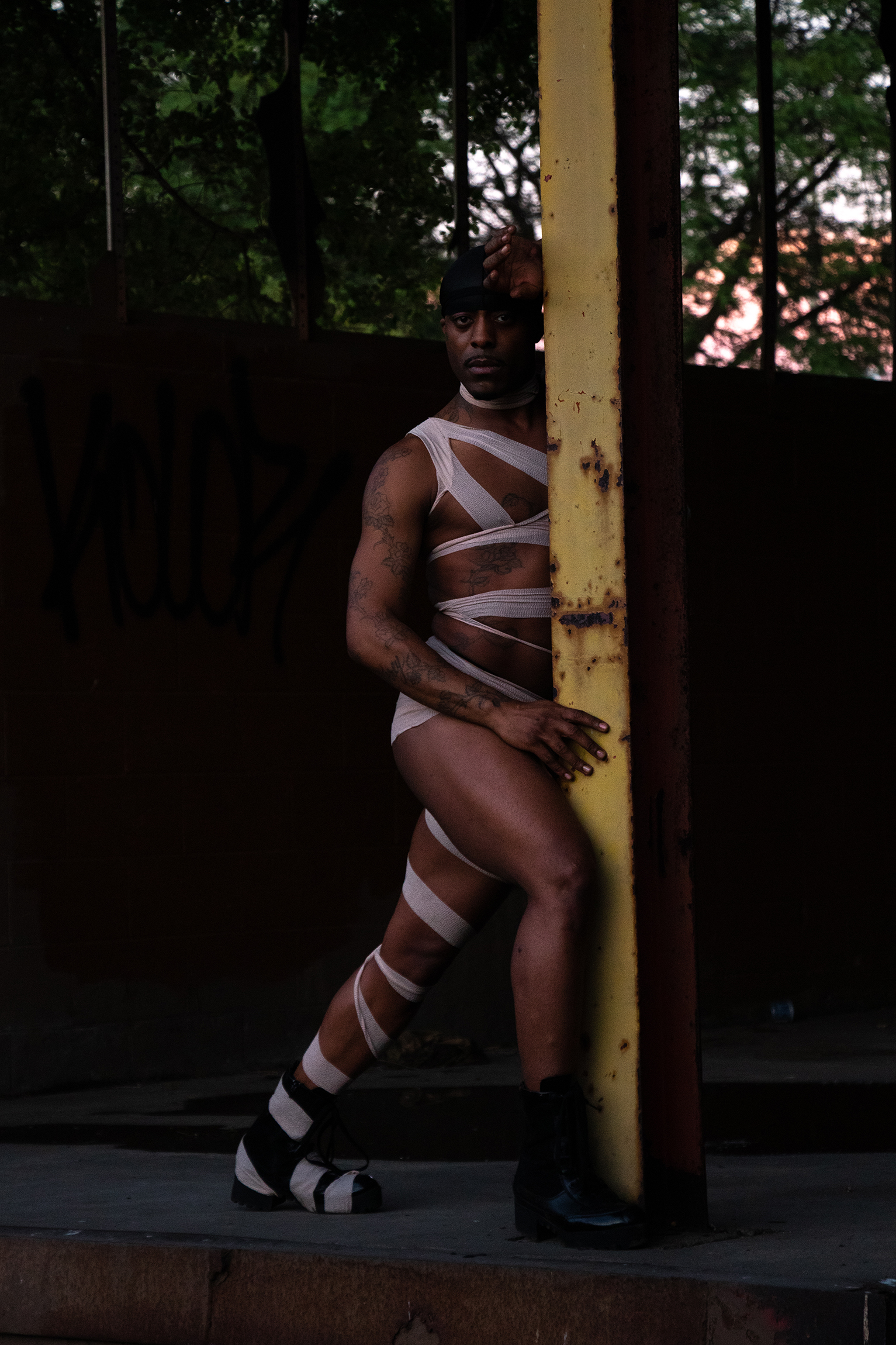
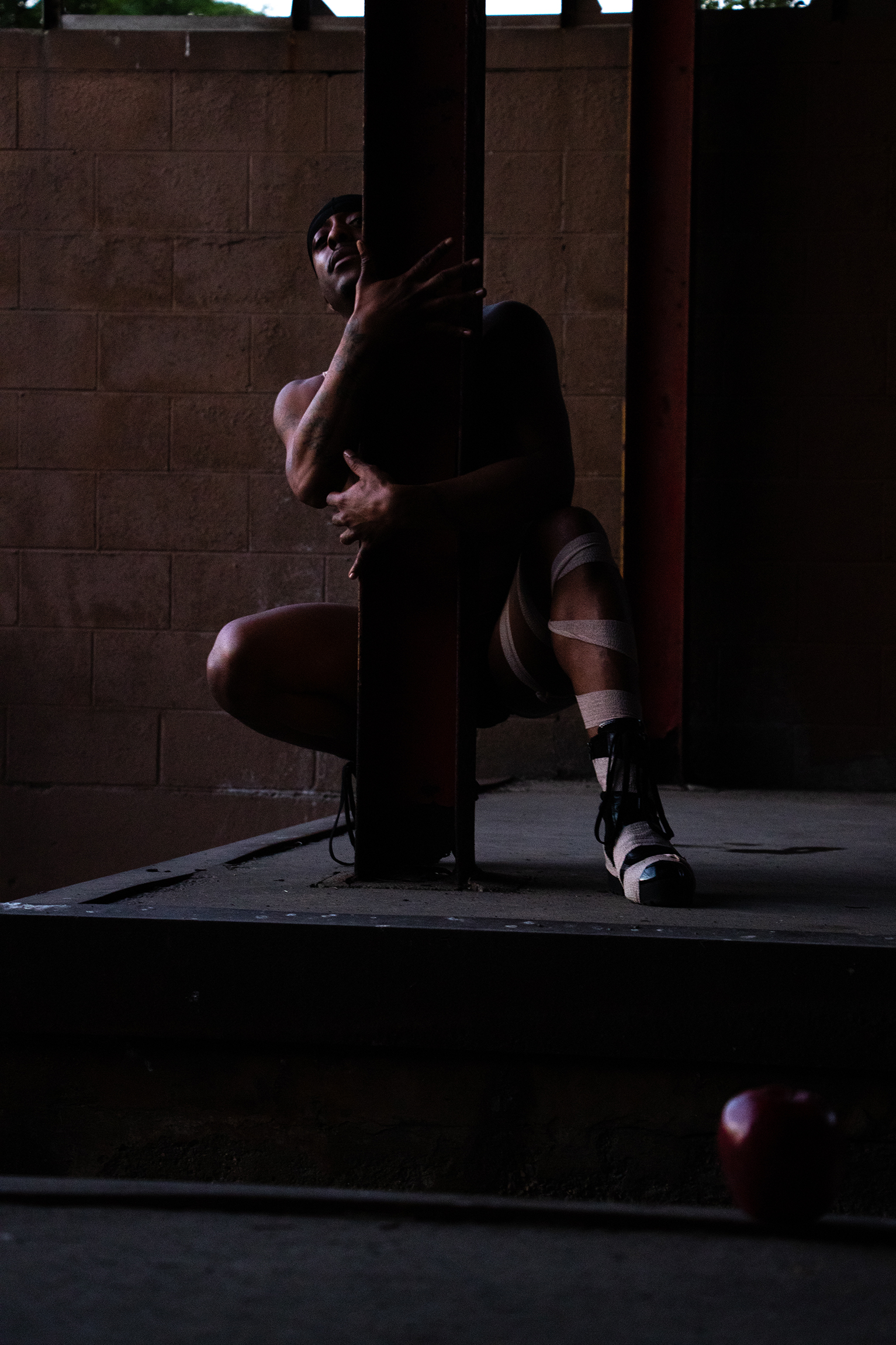
This is the experience of being, a body event, an attunement to the life force that animates my skeleton and mind. The same life force that drives roots through concrete, rusts steel, and builds stalactites under overpasses. I feel an intense presence in the current moment, a quieting of insecurities, a transcendence of cerebral conceptions of self, a sustained state of embodiment as energy fills and flows through me. Being there, without the comfort and constraints that come with a normative identity, I can embrace my full humanity and reconnect with a part of myself I’ve hidden. I lean into exploring this way of relating to another human being. Finding sanctuary in each other and in ourselves, we create something transformative.
I use flashes to imprint Paris on long exposures that capture the subject and surroundings in one shot. Scale shifts as I pull the variable zoom back to capture the atmosphere along with the details of Paris’ face. The technique requires patience, and we slow down, working deliberately. Lights burn into the camera’s sensors as the lens moves, revealing flickering bulbs as a pulsing line in the photo. A cop car drives past, lights flashing, trailed by the lens it becomes part of the picture.
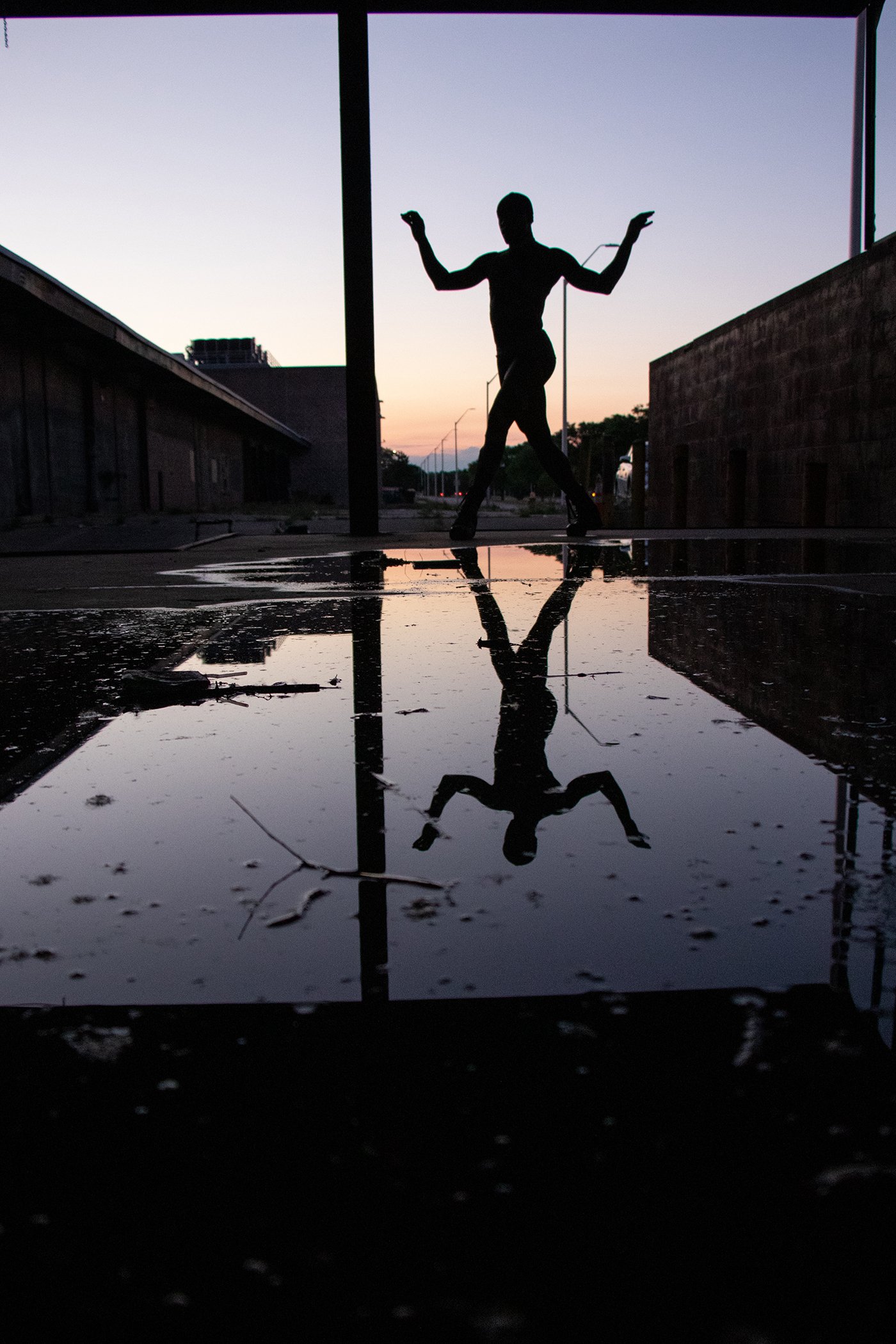

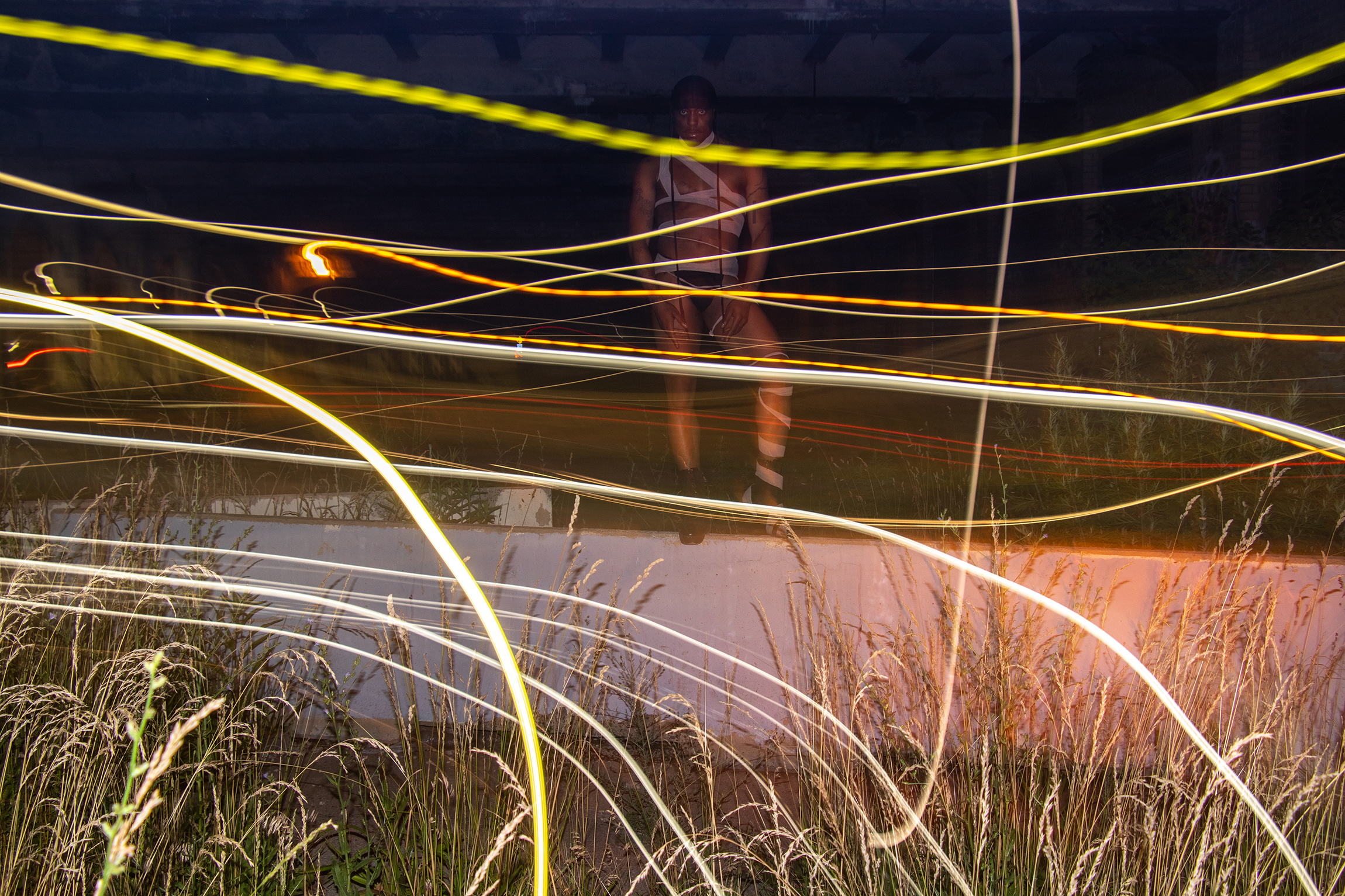

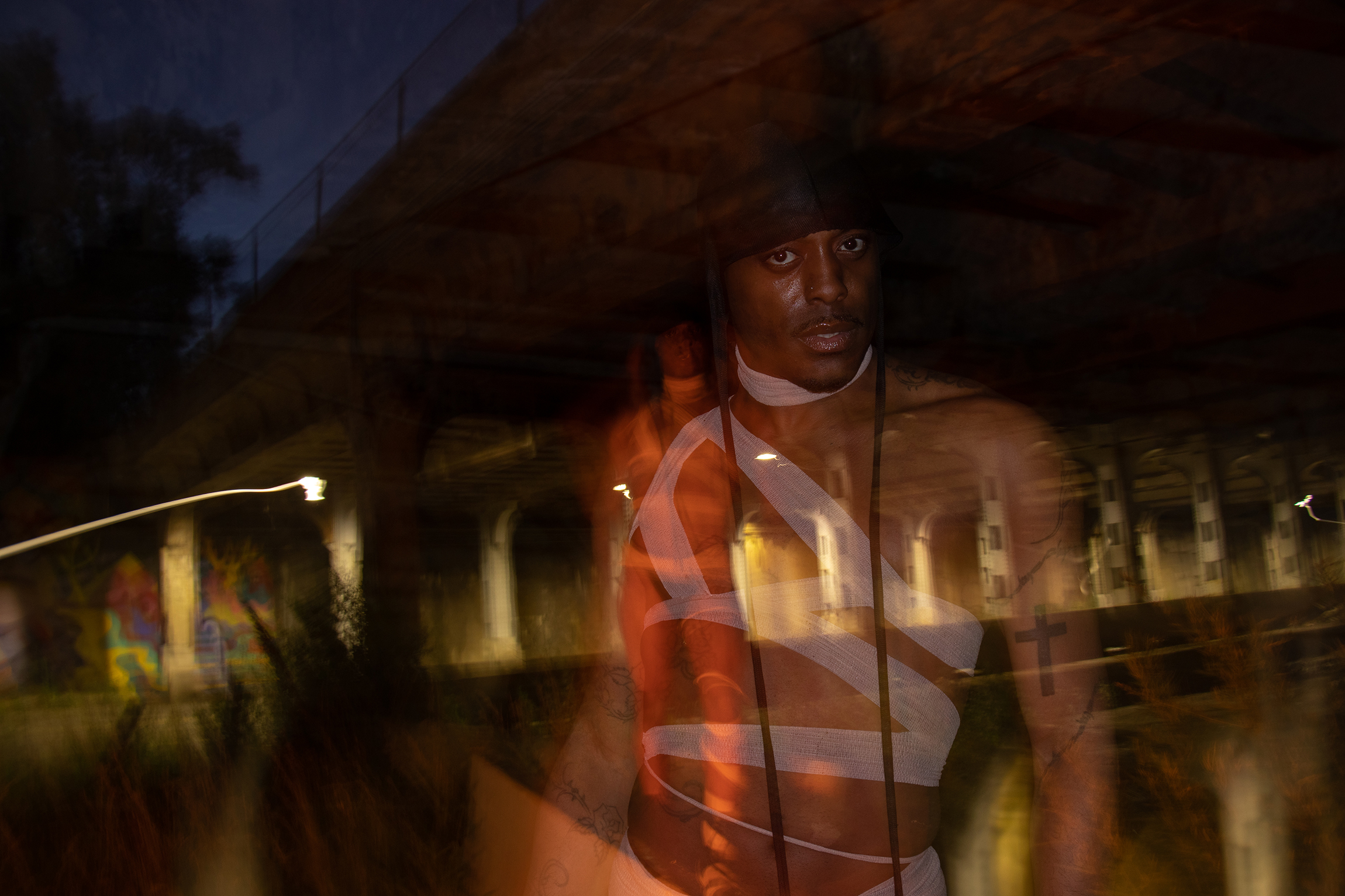
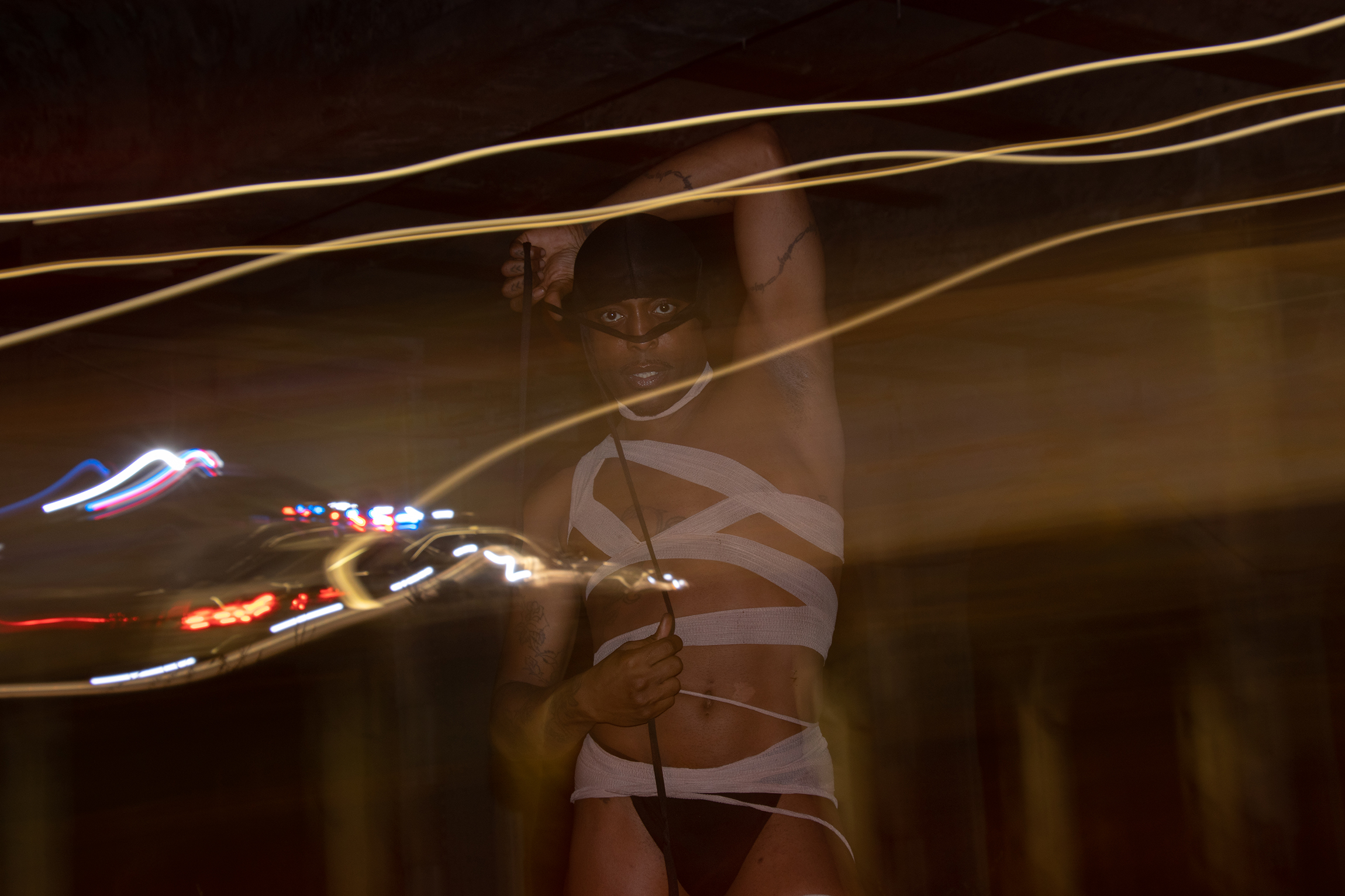
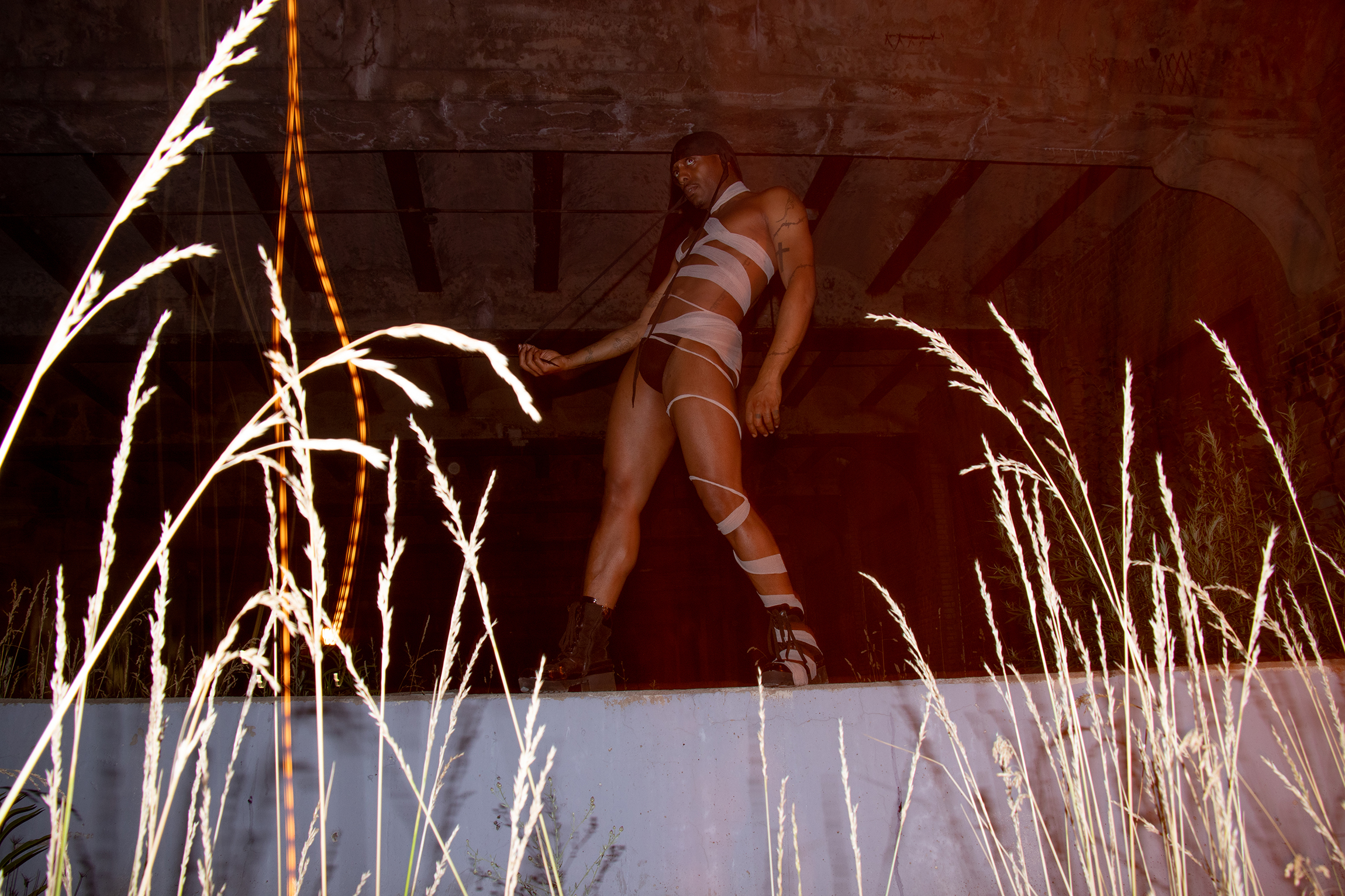
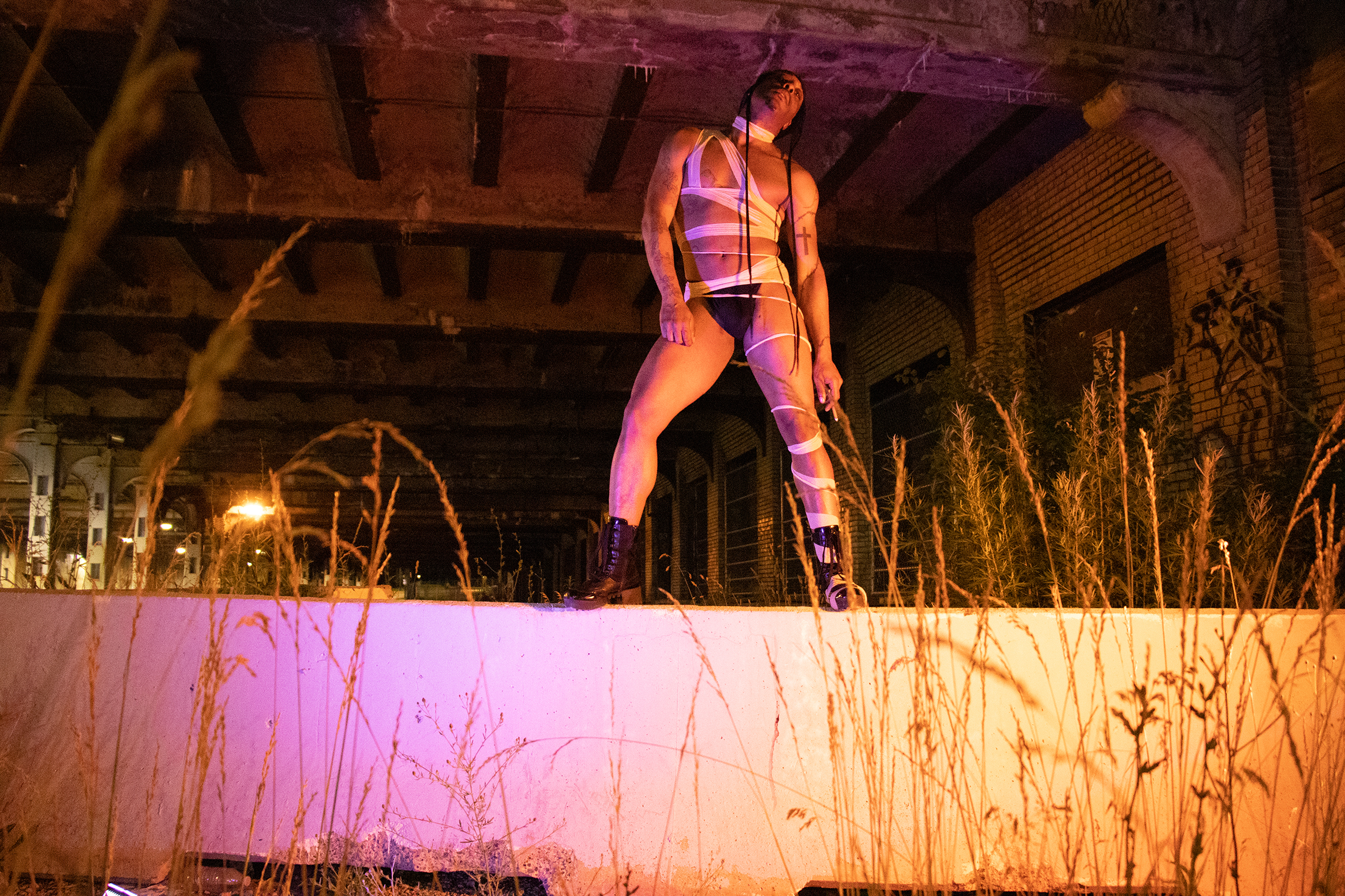
On the way home I’m feeling grateful for the time and space we’ve shared when Paris asks me to identify my sexuality and my desires. I still feel uncertain of how to categorize my sexuality, but I tell them how much I’ve enjoyed our connection.
Feeling safe and accepted I decide to tell Paris about the first time I had sex: my friend and I slid out of our sleeping bags and into bed together at a middle school sleepover. Afterwards I made my friend promise he wouldn’t tell his parents, but when his mom’s name showed up on the house phone’s caller ID later that morning, I picked up the second line to listen silently from the cement floor in the garage as she relayed details to my mom. Even though the follow up conversation with my parents was supportive I felt shame for years. My family’s support seemed tiny compared to the dominant narrative that conditioned me to be so ashamed I used to avoid getting drunk for fear I would lose all inhibition and confess my secret to someone.
Stepping out from the shelter of a privileged identity and into a vulnerable place allows me to reconnect with what it means to be human. Forsaking my allegiance to comfort allows me to explore the cramped corners of myself I have suppressed and brings me back in touch with my ability to exist authentically. It allows me to sincerely connect, often in ways that don’t fit any script. A new sense of freedom and support arises with the recognition that I am not alone but in community with other human beings who also reject judgments about how people should be. When Paris and I are co-creating and connecting, we are engaging in the healing experience of being present. The overwhelming sensation of being in the moment exiles fears, leaving only us. I didn’t know how to answer Paris’ question about my intention but when they asked me to kiss I said yes, and it felt good.
Power
During the shoot Paris mentioned President Trump’s comment comparing life in Detroit (and several other Black cities) to “living in hell.” The phrase became the title of the project and our initial Instagram caption for Living in Hell states “Challenging stereotypes, a weapon of cis-hetero-patriarchal-christian-white-supremacy-capitalism, we embrace harmful demonizations in order to transform them with love, care, and attention.” We felt it was important to directly name privileged identities to upset the status quo, recognizing that prejudice has been enacted, codified, and entrenched to the point where people are socialized to believe privileged characteristics are standard, or normative. Living in Hell reclaims and exults what normative society rejects, reveling in reverence for the supernatural holdouts in decrepit corners of civilization.
Our hope is that this art unsettles the viewer, helps them to purge internalized prejudice. The unsettling feeling is important. It is the heat of the sun and the pull of the moon on the sprouting seedling, the fire and rain that fuels growth. I’ve most often felt this unsettling feeling when questioning my conceptions of self. Discomfort often occurs when I feel conflict, receive criticism, or when narratives I believe are challenged; but reflecting on these experiences and emotions helps me understand my relationship to power, which is to say how I relate to other people. Embracing discomfort helps me pause and reflect on ways that I am falling short of my values or causing harm.
I’ve felt tension arise from my whiteness, my male body, my status as a settler. Sometimes I’ve moved eagerly to help others only to take actions that are not welcome or prompt criticism. Often this happens because I’ve been blind to my own assumptions and been humbled by feedback. Recognizing my privileges and giving up power requires thinking through the ways I’ve been socialized, it looks like double checking my preconceptions, questioning the narratives I subscribe to, and appreciating feedback as fuel for growth. Although there are times that require me to be silent or sit-out of conversations, bowing out of certain spaces or discussions is also part of disrupting entrenched power dynamics while actively engaging with an intentional community.
Much of my personal journey as a human being in pursuit of decolonization requires intentionally unlearning the ways I am conditioned. Learning to sit with unsettling experiences and building self-awareness around my privileges has helped me navigate and contribute to non-normative spaces. Non-normative spaces (for example Black-centered, Indigenous-centered, and Queer-centered spaces) often help foster new levels of conscious community building and self-awareness through intentional interactions. Non-normative spaces play a key role in facilitating “being” experiences because they often afford a unique sense of safety that allows vulnerability and presence.
Part of the power of “being” comes from sincerely connecting in a moment of honest self-expression that transcends pressure to conform, hide, or reduce any part of the self. In creating this work Paris and I embodied ourselves outside of normative judgments, I was fully present in the moment, consumed with being myself in a fully affirmative way, free from any need to fit in. I wasn’t thinking about how I was perceived, only about how wonderful it was to be using my body, how lovely to be vulnerable with another person, how satisfying to apply my skills in an act of creation, how humbling to attempt to capture the beauty of another. In the space and time of the photoshoot, with each other as witnesses, Paris and I reclaimed ourselves as fully human beings.
My experience teaches me “being” is an impactful tool because of its deep melding of body and mind, akin to a flow-state. Simply experiencing this reprieve from uncertainty, the meditative quality of being present is restorative, yet “being” gains decolonial significance when combined with actions that disrupt colonial power relationships. Embodying queer sexuality, intimacy, and connection fits what I consider an experience of “being human” because it undermines heteronormative doctrines and opens my imagination to the real possibilities of living free from the hierarchies embedded in civilization.
Through “being human” we can rewire how we enact and interact with privilege and power, reclaim our relationship to space, and embody a decolonial world view. “Being human” allows me to act as myself without any comparison to normativity while still specifying a place of alignment with community. In this instance I think that experiencing embodiment while breaking normative narratives unsettles the colonial power dynamic. Since then, I try to cultivate this experience by moving with the intention of being in right relation to all members of my community and mother earth and by trying to use my skills, privilege, and energy to restore harmonious relations among peoples and the natural world.
I know that a photoshoot with Paris isn’t the same as rematriating the land, but this is part of what I can do here and now. This is an attempt at Doikayt. In the city we created a space free from state surveillance, and cultivated a reverent relationship to each other, ourselves, and our surroundings. Perhaps our valorization of the decay is a small contribution to the resolute campaign of mother nature to reclaim the city of Detroit in the aftermath of colonization, the industrial revolution, and white flight. In any case, I am working to cultivate a new paradigm within myself and among the people I am in community with every day. As many have pointed out before me, being present, thoughtful, and interconnected, facilitates a more robust, reciprocal, and symbiotic existence for all involved. Through an act of creation and connection we took a step in transforming our relationship to ourselves, each other, our surroundings, and colonial power structures. I think these actions advanced the messy, non-linear practice of realizing my authentic self and living my values.
Interpretations
I invite the viewer to check-in on their personal values and their insecurities. What is beauty? What is joy? What do you fear? Where do your insecurities stem from? I think these are important questions to consider when viewing this work. We seek to show embodied experiences and blur the line between beauty and fear, between joy and insecurity.
I hope that the photos from Living in Hell communicate our embodiment and challenge normative conceptions of self and security. I hope that these words resonate and invite you into our experience. Paris and I went dancing in the decay with no real purpose other than to connect and create, but in doing so we were able to heal together. May we all feel embodiment, connect joyfully, and heal the world.
Model/Dancer - Paris La Don
Essay and Photography - Andrew Kaplowitz